L293D vs L298N: The Difference Between L293D and L298N
2024-07-12
5378
Catalog
What differentiates the L293D and L298N fundamentally? One standout factor is their current handling capacity.
The L293D is designed to handle a continuous current of up to 600mA per channel, with peak currents reaching 1.2A for brief periods.
The L298N, on the other hand, can manage a continuous current of 2A per channel, with peaks up to 3A. This significant difference in current capacity positions the L298N as a better fit for higher power applications.
Imagine you're working on robotic projects that demand larger motors for more demanding tasks. Engineers often veer towards the L298N due to its superior current handling capabilities. Does this choice align with the operational demands of your specific project?
Power dissipation and thermal management are also factors worth considering. The L298N, being a larger and more robust component, has enhanced thermal dissipation capabilities. Its integrated heatsink helps manage heat better during extended periods of high current draw.
In contrast, the L293D, lacking a dedicated heatsink, may require additional cooling solutions or heatsinks to prevent overheating in high-load scenarios.
Think about hobbyists who have used both drivers in various projects. The L298N’s built-in heatsink often provides a more reliable and efficient solution for sustained operations under high loads. This insight underscores the importance of thermal considerations, especially in projects with extended operational periods.
Are there substantial differences in voltage range between these two drivers? Yes, there are.
The L293D operates in a voltage range of 4.5V to 36V, making it suitable for low to medium voltage applications.
Conversely, the L298N supports a broader voltage range, from 4.8V to 46V, allowing for more flexibility and use in higher voltage applications.
In practical terms, this means that when working on versatile platforms that might require different voltage levels, such as DIY automation systems or varied robotics platforms, the L298N’s broader voltage range provides a distinct advantage. This flexibility simplifies power management across different components, enhancing overall design efficiency.
What about protection features? The L293D comes with built-in flyback diodes, which protect the device from voltage spikes generated by the inductive loads of the motors. In contrast, the L298N typically requires external diodes to manage these spikes.
Although integrating external diodes can offer more control over the design and could potentially improve performance, it also adds complexity to the circuit design.
From the perspective of streamlined design and ease of assembly, embedded system developers often favor the L293D for simpler projects or educational purposes. The inclusion of internal protection mechanisms reduces the assembly steps, making it an ideal choice for beginner projects or applications where simplicity and compactness are prioritized.
A pivotal insight is that the choice between the L293D and L298N should be guided by specific project requirements. While the L298N offers higher current capacity, better thermal management, and a wider voltage range, the L293D’s simplicity and integrated features make it no less valuable for less demanding or more compact projects.
Whether it’s addressing complexity, power, or thermal constraints, the contextual requirement directly influences the optimal choice of the motor driver.
What is L293D?
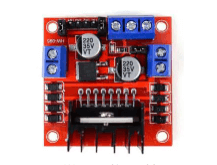
The L293D, a dual H-bridge motor driver IC developed by STMicroelectronics, is utilized for controlling DC and stepper motors.
Characteristics:
- High efficiency
- Low power consumption
- Robust reliability
Applications span across various fields:
- Smart home devices
- Robotics
- Intelligent vehicles
With an input voltage requirement of 7V, the L293D operates within a working power supply voltage range from 4.5V to 36V. This wide range ensures adaptability in various scenarios. Its rugged design supports operation within a temperature range of -40°C to 150°C. Additionally, the chip features an impressively low operating current of just 2mA and can deliver a high output current of 600mA, with dual outputs enhancing its practicality.
Alternative components include:
- L293DD
- L293E
How does the L293D manage to maintain such low power consumption while delivering high output current? This is due to its efficient internal circuitry which minimizes heat dissipation during operation.
In practical applications, the deployment of the L293D frequently showcases its efficiency. For example:
- Engineers often use this driver in building small robots and automated systems requiring precise motor control.
- In an autonomous vehicle prototype, the L293D manages motor functions to achieve seamless navigation.
From my perspective, the L293D stands out due to its versatility. Despite the arrival of newer motor drivers, this chip's balance of simplicity and capability often makes it a preferred choice, especially for educational purposes and DIY projects. This preference hints at a broader principle in electronics: the most effective solutions are not always the latest innovations but those that meld reliability, simplicity, and performance.
What is L298N?
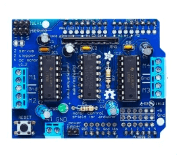
The L298N, a motor driver chip produced by STMicroelectronics, is engineered for controlling both DC motors and stepper motors. This versatile chip integrates multiple functionalities, including logic control, power output stages, temperature compensation, and overload protection circuits.
By processing various control signals, the L298N can achieve motor forward and reverse rotation as well as PWM speed control. What specific scenarios could benefit most from such versatile control? Robotics applications, for instance, often demand precise motor movements.
This chip has the capacity to deliver up to 2A of output current, which makes it suitable for a diverse array of motor control applications. Operating within a power supply voltage range of 2.5V to 48V, it offers a significant range of flexibility to meet different motor requirements. Are there alternative chips? Yes, replacements for the L298N include:
- L298P
- L293DD
- L6206N
- L6207QTR
- L6225N
- L6227DTR
Why should one understand the practical applications of the L298N? In robotics, controlling the speed and direction of motors precisely is essential for tasks that require accurate movement. For instance, navigating through complex environments becomes feasible with precise motor control. In STEM education, the L298N is frequently used because its robust design and tolerance for minor mistakes provide a hands-on learning platform for students.
Another aspect of the L298N's design is its built-in diodes, which guard against voltage spikes produced by the inductive loads of motors. This protective feature helps prevent damage to both the chip and the interfaced microcontroller. Therefore, seasoned engineers often prefer the L298N for projects that require reliable motor control and significant motor protection.
From my perspective, the L298N stands out not only for its technical specifications but also for its practical applications. Its ability to manage various motor types and robust protection mechanisms make it an excellent choice for both educational and professional projects where motor control is essential.
What is an H-Bridge Configuration?
An H-Bridge is an electronic circuit designed to switch the polarity of the voltage applied to a load. This circuit is often employed in robotics and various other fields to enable DC motors to run in either forward or backward directions. But how exactly does the H-Bridge achieve this? By changing the polarity of the power supplied to a DC motor, one can alter the direction of its rotation. This configuration is not limited to directional changes; it can also facilitate braking and freewheeling modes.
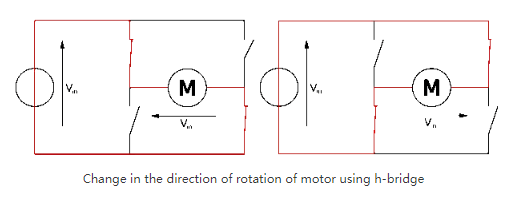
When engaged in braking mode, the H-Bridge allows the motor to stop rapidly. It does this by effectively short-circuiting the motor's terminals, making the motor's kinetic energy dissipate as electrical current. This mechanism enables quick deceleration. On the other hand, in freewheeling mode, the motor gradually comes to a stop due to its own inertia.
Interestingly, human experience with H-Bridge circuits reveals even more practical applications. For situations that require precise control over motor speed and position, H-Bridges are frequently paired with feedback mechanisms, such as encoders. This combination ensures accurate adjustments, significantly enhancing the performance of systems like robotic arms and automated guided vehicles.
The progression in H-Bridge designs has also led to more efficient and robust components. Modern H-Bridge integrated circuits now include built-in protections such as overcurrent, short-circuit prevention, and thermal overload safeguards. These were typically managed through external components in earlier designs. The integration of these features not only heightens safety but also simplifies the overall circuitry. This simplification makes H-Bridges more accessible to hobbyists and students alike.
In summary, the H-Bridge configuration remains an adaptable and crucial element in motor control. It provides a broad range of functionalities:
- Changing the direction of motor rotation
- Enabling rapid braking
- Allowing inertia-based stopping
The continuous refinement and practical adaptation of H-Bridge circuits highlight their significance in modern electronic and robotic systems.
Pinout Diagram for L293D and L298N
Pinout Diagram for L293D
The L293D is a quadruple high-current half-H driver. It can provide bidirectional drive currents of up to 600 mA at voltages ranging from 4.5 V to 36 V. This driver is especially popular in robotics and automotive sectors for controlling DC motor direction and speed. But why do engineers often lean towards using L293D in these applications? One reason is the ability to handle multiple motors and the ease of integration into various systems.
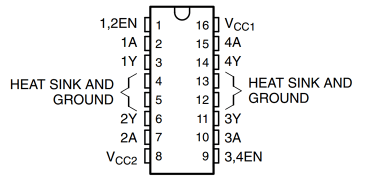
Below is the pinout diagram for the L293D:
- Pin 1 (Enable 1,2): Activates input signals for pins 2 and 7.
- Pins 2, 7 (Input 1, Input 2): Control the outputs connected to pins 3 and 6.
- Pins 3, 6 (Output 1, Output 2): Linked to the motor terminals.
- Pin 4, 5 (Ground 1, Ground 2): Attached to the power supply ground.
- Pin 8 (Vcc2): Supplies power to the motors.
- Pin 9 (Enable 3,4): Activates input signals for pins 10 and 15.
- Pins 10, 15 (Input 3, Input 4): Drive the outputs connected to pins 11 and 14.
- Pins 11, 14 (Output 3, Output 4): Connected to the motor terminals.
- Pin 12, 13 (Ground 3, Ground 4): Attached to the power supply ground.
- Pin 16 (Vcc1): Supplies logic voltage.
Intriguingly, enable pins are crucial for delivering accurate signals to the motor driver. For instance, could the addition of external resistors or filters on enable pins enhance signal stability and minimize noise? Indeed, such practices can significantly improve the reliability of motor control systems.
Pinout Diagram for L298N
The L298N is a dual H-Bridge motor driver that excels in controlling the direction and speed of two DC motors. It supports up to 2 A of continuous current per channel and operates within a voltage range of 5 V to 35 V. This driver finds its strength in more demanding automotive and industrial applications requiring higher current capacity.
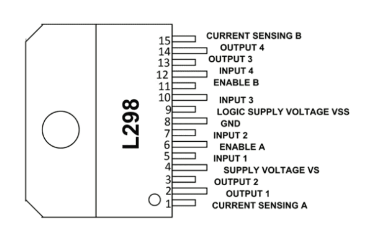
Below is the pinout diagram for the L298N:
- Pin 1 (Enable A): Activates input for channel A.
- Pin 2 (Input 1): Controls the first half-bridge of channel A.
- Pin 3 (Output 1): First output for channel A.
- Pin 4, 5 (Ground): Linked to the power supply ground.
- Pin 6 (Output 2): Second output for channel A.
- Pin 7 (Input 2): Controls the second half-bridge of channel A.
- Pin 8 (Vss): Supplies logic voltage.
- Pin 9 (Enable B): Activates input for channel B.
- Pin 10 (Input 3): Controls the first half-bridge of channel B.
- Pin 11 (Output 3): First output for channel B.
- Pin 12, 13 (Ground): Linked to the power supply ground.
- Pin 14 (Output 4): Second output for channel B.
- Pin 15 (Input 4): Controls the second half-bridge of channel B.
- Pin 16 (Vss): Supplies motor voltage.
Interestingly, does the implementation of heat dissipation mechanisms like heat sinks play a role in the performance of the L298N when operating at higher currents? Absolutely, managing thermal efficiency is often a limiting factor impacting both functionality and lifespan of the driver. Utilizing optocouplers can also isolate control signals from the motor power supply, thereby enhancing safety and overall system reliability.
Finally, a comprehensive understanding and proper implementation of these pinout diagrams are vital for the L293D and L298N motor drivers to function effectively. Whether in robotics or industrial automation, these components serve as the backbone of numerous systems. Thus, deeper insight into their configurations is highly beneficial for anyone involved in design and development in these fields.
Specifications of L293D and L298N
The L293D and L298N are two commonly used motor driver modules, especially in robotics and electronics projects. These ICs are specialized for controlling motors, providing the necessary power amplification between the microcontroller and the motors. This amplification is often crucial because microcontrollers typically cannot supply enough current directly.
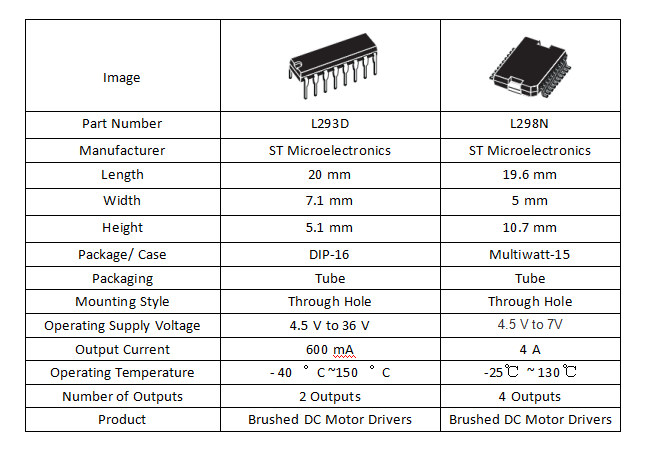
What makes the L293D an interesting choice? The L293D is a quadruple high-current half-H driver. It is capable of driving bidirectional current up to 600mA per channel, with a peak output current of 1.2A per channel for non-repetitive pulses. Operating at a voltage range of 4.5V to 36V, the L293D stands out for incorporating internal clamp diodes, which help protect the circuit from back EMF generated by the motors. A question arises: Why are internal clamp diodes beneficial? These diodes contribute to the device's reliability in small-scale robotics projects.
In practical applications, the L293D is often chosen for automated guided vehicles (AGVs) and simple robotic arms projects. Its straightforward design and ease of integration enhance its appeal among hobbyists and engineers. For instance, in a university robotics competition, teams might select the L293D for their compact mobile robots due to its balance of performance and simplicity. Is it a good fit for such competitions? Indeed, its balance of ease and functionality is quite compelling.
On the other hand, why might one consider the L298N? The L298N is a dual H-Bridge motor driver capable of driving current up to 2A per channel, with a peak current capability of 3A. Its operating voltage ranges from 4.5V to 46V, making it appropriate for a broader range of applications, including motors with more demanding power requirements. Unlike the L293D, the L298N does not have internal clamp diodes, necessitating external diodes for protection against back EMF. Despite this, the L298N’s ruggedness and higher current capabilities make it suitable for more complex and powerful robotic applications.
Professionals often employ the L298N in advanced projects such as automated machinery and large robotic platforms. Imagine an industrial setting: the L298N might be selected to drive the motors of a conveyor system, given its ability to handle higher current loads and robust performance in harsh conditions. Is it the best choice for industrial applications? Its robustness suggests so.
Evaluating both ICs, one must weigh the trade-offs between current capacity, protection features, and ease of integration. For smaller projects where simplicity and quick deployment hold higher value, the L293D is often preferred. Conversely, for projects requiring higher power and more robust performance, the L298N is the better choice.
Ultimately, the decision between L293D and L298N hinges on specific project requirements, which include the type of motors used, current needs, and the operational environment. Both ICs have demonstrated their value in numerous practical applications, providing reliable and efficient motor control solutions.
Characteristics of L293D and L298N
L293D Features and Applications
The L293D motor driver IC exhibits a range of capabilities suitable for various applications. It is available in both DIP and SOIC packages. Why does this matter? Well, it adds flexibility for different circuit board designs. It includes built-in overtemperature and overcurrent protection, enhancing stability under diverse conditions.
Key Specifications
- Drives both DC and stepper motors
- Output currents up to 1.2A
Do these features make it adaptable for many control systems? Absolutely.
Usage in Projects
In practical scenarios, the L293D is frequently chosen for smaller projects and educational purposes. Imagine a hobbyist building a simple robot. Beginners often prefer the L293D to control motor movements. Why? It is cost-effective and straightforward to wire with standard microcontrollers like Arduino or Raspberry Pi.
Specific Scenarios
- Motor current requirements are modest.
- Built-in protection features help avoid damage during short-circuit conditions or thermal overloads.
When these conditions are met, the overall system's lifespan can be extended.
L298N Features and Applications
The L298N motor driver IC consists of two H-bridge circuits. What does this mean for users? It allows control over two DC motors' direction and speed. This configuration is particularly advantageous in dual-motor drive applications such as robotics and automotive systems.
Key Specifications
- Supports standard 5V logic outputs
- Compatible with a wide range of microcontrollers
Is the L298N user-friendly? Yes, it is. Its connection pins simplify the integration process with various electronic setups. It can adjust motor speed using Pulse Width Modulation (PWM) signals.
Usage in Projects
A practical application where the L298N excels is in developing small robotic platforms—think educational STEM programs or DIY self-balancing robots. It manages higher currents and provides reliable control under demanding conditions.
Specific Scenarios
- Environments requiring elaborate motor coordination
Here, the L298N becomes indispensable.
Comparative Perspective
From a broader perspective, choosing between the L293D and L298N often depends on specific application requirements. Factors such as current capacity, size constraints, and control complexity play crucial roles in decision-making.
Selection Criteria
- For robust control and higher current outputs: L298N
- For educational contexts and less demanding applications: L293D
In my experience, these criteria often determine the best choice.
Both the L293D and L298N are invaluable tools for anyone involved in electronics and robotics, from beginners to advanced users. They are versatile, reliable, and user-friendly, making them essential in various projects and educational endeavors.
Differences between L293D and L298N
Packaging
The L293D embraces a dual in-line package (DIP), conferring a certain level of compactness crucial in space-constrained designs. This compact disposition proves indispensable in projects where spatial efficiency is pivotal. Alternatively, the L298N boasts a multi-pin in-line package, augmenting its suitability for high-power applications that necessitate robust physical integration.
Why do we see such a pronounced variance in packaging between these drivers?
The answer lies in their intended application scope and the required power handling.
Current and Voltage
The L293D delivers a peak current of 600mA per H-bridge, reaching up to 1.2A for short durations. In contrast, the L298N provides each H-bridge a significantly robust current capacity of 2A, operating within a broad voltage range of 2.5V to 48V. This stark contrast delineates their application domains: lightweight educational initiatives versus demanding motorized model cars.
How does current capacity influence project selection?
In essence, higher current capacity translates to greater operational scope for heavier loads.
Chip Type
The L293D is inherently tailored for stepper motor applications, emphasizing precision in position control. Meanwhile, the L298N, as an H-bridge driver, exhibits proficiency in managing both DC motors and actuators under higher current conditions. DIY electronics hobbyists often tout the L293D for precise control tasks, whereas the L298N's versatility finds favor in more strenuous applications.
Heating Requirements
Under substantial load conditions, the L293D might necessitate minimal cooling assistance due to heat accumulation. Conversely, the L298N demands significantly more comprehensive cooling solutions, such as heat sinks or cooling fans, to counteract thermal buildup. For instance, continuous operation of high-power motors with the L298N compels practitioners to implement robust thermal management strategies to avert overheating.
Is proactive cooling management essential in electronic design?
Proactive cooling measures are crucial to maintaining system integrity and operational longevity.
Control Interface
The L293D employs logic-level control for directional and status management, while the L298N extends this by incorporating PWM signals for nuanced speed control alongside logic-level direction control. This nuanced control offered by the L298N proves instrumental for applications requiring meticulous speed adjustments.
Optocoupler Presence
The absence of an optocoupler in the L293D elevates its susceptibility to microcontroller interference. Conversely, the L298N's integrated optocoupler isolation fosters enhanced system stability, a deciding factor in applications fraught with electronic noise or requiring signal fidelity.
The incorporation of an optocoupler is a deliberate design choice for noise-sensitive environments.
Functionality
Both the L293D and L298N are dual-bridge drivers capable of managing two DC motors or one stepper motor. However, the L298N can handle substantially higher current demands, guiding engineers to choose the L293D for lower current tasks and switch to the L298N for higher current applications.
Application Scenarios
The L293D finds its niche in low-power applications, such as educational projects or diminutive robotics. Conversely, the L298N is apt for more demanding scenarios, including advanced robotics and motorized model cars. Through practical insights, it becomes evident that the choice of these drivers considerably affects project performance and reliability.
Collectively, the L293D and L298N support forward and reverse control of DC motors, as well as PWM speed regulation. Their interchangeable usage in various applications is highly valued, especially during prototyping and iterative development where flexibility and reliable operation are sought after.
Frequently Asked Questions [FAQ]
1. What is L293D?
Have you ever wondered what keeps small DC motors running smoothly in both directions? Enter the L293D—a 16-pin motor driver IC. It can control two DC motors simultaneously, managing up to 600mA of bidirectional drive current and operating within a voltage range from 4.5V to 36V. Isn't that versatile?
2. What is the function of the L293D driver?
L293D isn't just about running motors in different directions. This driver IC is engineered to cater up to 600mA of bidirectional drive current within a 4.5V to 36V voltage range. Its aptitude for driving inductive loads like relays, solenoids, DC motors, and even bipolar stepper motors is noteworthy. Engineers cherish its low power consumption and compact footprint, especially in hobby projects or applications where efficiency is a priority. Isn't it fascinating how such tiny components can make such a big impact?
3. How much power does the L298N use?
The L298N leans on the acclaimed L298N dual H-bridge motor driver chip. It flaunts a voltage operation range of 5V to 35V, holding the capacity to drive motors with up to 2A of current per channel. This capability makes it a go-to for robotics and industrial automation projects that mandate higher current and voltage. Interestingly, wouldn't you say its robustness hints at its high power capacity?
4. How many motors can the L298N control?
From a user’s standpoint, the L298N module is highly versatile. It can control up to 4 DC motors or manage 2 DC motors with direction and speed control attributes. This versatility means it finds a home in complex motor control configurations, proving indispensable in educational robotics and DIY automation projects. What would you build with such a flexible tool?
5. What is the difference between the L293D and the L298N?
When comparing the L293D and L298N motor driver ICs, it's crucial to dissect their voltage and current capabilities. The L293D operates in a voltage range of 4.5V to 36V and can manage up to 600mA of current per channel. This makes it apt for small to medium-sized DC motors. On the other hand, the L298N excels with an operational range of up to 46V and a capacity to handle up to 2A per channel, ideal for larger motors or more demanding scenarios. So, while selecting between these two, it becomes essential to closely evaluate the voltage and current needs of your specific application to ensure both performance and reliability. Have you ever faced such a decision-making situation?
 ABOUT US
Customer satisfaction every time. Mutual trust and common interests.
ABOUT US
Customer satisfaction every time. Mutual trust and common interests.
function test. The highest cost-effective products and the best service is our eternal commitment.
Hot Article
- Are CR2032 and CR2016 Interchangeable
- MOSFET: Definition, Working Principle and Selection
- Relay Installation and Testing, Interpretation of Relay Wiring Diagrams
- CR2016 vs. CR2032 What’s the difference
- NPN vs. PNP: What's the Difference?
- esp32 vs stm32: which microcontroller is better for you?
- LM358 Dual Operational Amplifier Comprehensive Guide: Pinouts, Circuit Diagrams, Equivalents, Useful Examples
- CR2032 VS DL2032 VS CR2025 Comparison Guide
- Understanding the Differences ESP32 and ESP32-S3 Technical and Performance Analysis
- Detailed Analysis of RC Series Circuit
 Using Chemical Energy to Generate Electricity
Using Chemical Energy to Generate Electricity
2024-07-15
 1N4148 Small Signal Switching Diodes Symbol, Working Principle, Packages and Other Details
1N4148 Small Signal Switching Diodes Symbol, Working Principle, Packages and Other Details
2024-07-12
Hot Part Number
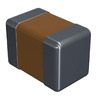 08053G474ZAT2A
08053G474ZAT2A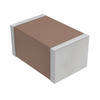 CGA5F4C0G2J681J085AA
CGA5F4C0G2J681J085AA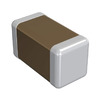 GRM1555C1H561JA01J
GRM1555C1H561JA01J 04026C104KAT2A
04026C104KAT2A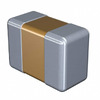 C1005X8R1C473K050BE
C1005X8R1C473K050BE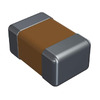 0805YC823KAT4A
0805YC823KAT4A 08053C222MAT2A
08053C222MAT2A 04023A3R3CAT2A
04023A3R3CAT2A GRM1555C1H240JA01J
GRM1555C1H240JA01J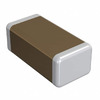 GRM31MR61C564KA01L
GRM31MR61C564KA01L
- TAJW686M004RNJ
- TAJD108M004RNJ
- T493C106K025BH6410
- X9269UV24IZ-2.7T1
- Z86E0612SSC
- MT25QL128ABA1ESE-0SIT TR
- V375C28C150BL
- ICE65L01F-TVQ100C
- Z8018233FSC
- MAX4147ESD
- HIP6302VCBZ-T
- FF400R12KT3P-E
- PCI1420PDV
- DAC7552IRGTR
- XC4VFX40-10FF672C
- DS92LV1210TMSAX
- ST72F324BJ6T6
- LM3524DMX
- XC95216-15PQ160C
- T491C336M010AT48607622
- SM6T68CA
- T491A105K020ZT7126
- T491B335M035AT4280
- B82790S0513N201
- AD7703BNZ
- 17-21SYGC/S530-E1/TR8
- AAT3680IKS-4.2-T1
- AD6489BB
- BA10339F
- BD4904FM
- MP612XCG
- TC35471F
- APA2308KI-TRL
- MT7620A/B
- PE9601-11
- XCV600E-7FG680C0773
- UPD65945GD-P17-LML-A
- BCM3219IFEBG
- TDA8932 BT